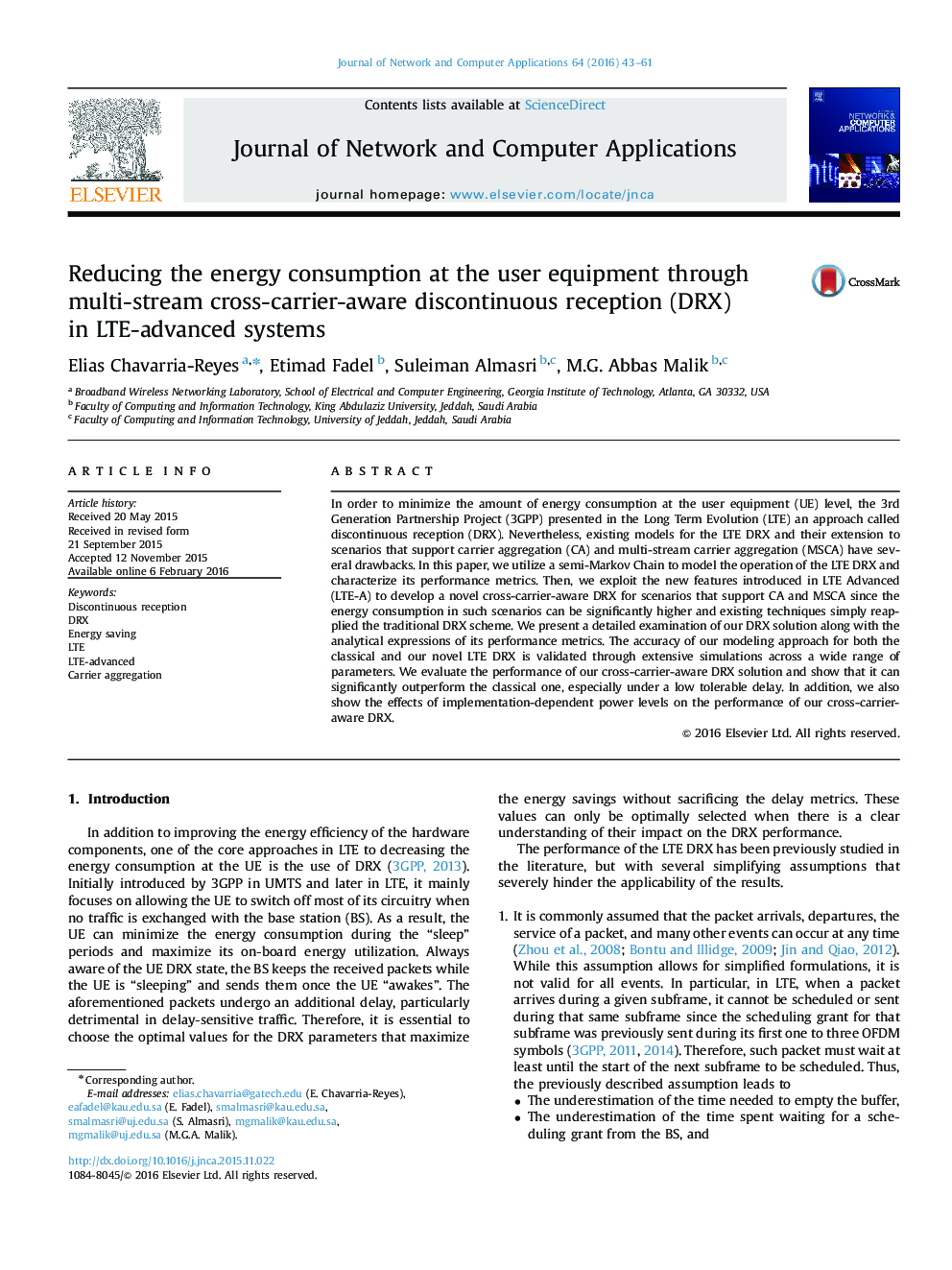| Article ID | Journal | Published Year | Pages | File Type |
|---|---|---|---|---|
| 459073 | Journal of Network and Computer Applications | 2016 | 19 Pages |
In order to minimize the amount of energy consumption at the user equipment (UE) level, the 3rd Generation Partnership Project (3GPP) presented in the Long Term Evolution (LTE) an approach called discontinuous reception (DRX). Nevertheless, existing models for the LTE DRX and their extension to scenarios that support carrier aggregation (CA) and multi-stream carrier aggregation (MSCA) have several drawbacks. In this paper, we utilize a semi-Markov Chain to model the operation of the LTE DRX and characterize its performance metrics. Then, we exploit the new features introduced in LTE Advanced (LTE-A) to develop a novel cross-carrier-aware DRX for scenarios that support CA and MSCA since the energy consumption in such scenarios can be significantly higher and existing techniques simply reapplied the traditional DRX scheme. We present a detailed examination of our DRX solution along with the analytical expressions of its performance metrics. The accuracy of our modeling approach for both the classical and our novel LTE DRX is validated through extensive simulations across a wide range of parameters. We evaluate the performance of our cross-carrier-aware DRX solution and show that it can significantly outperform the classical one, especially under a low tolerable delay. In addition, we also show the effects of implementation-dependent power levels on the performance of our cross-carrier-aware DRX.
